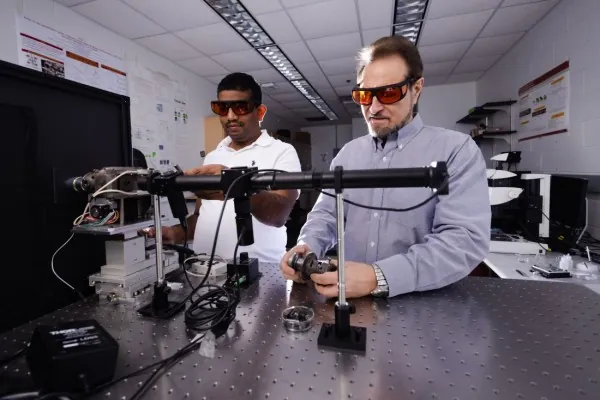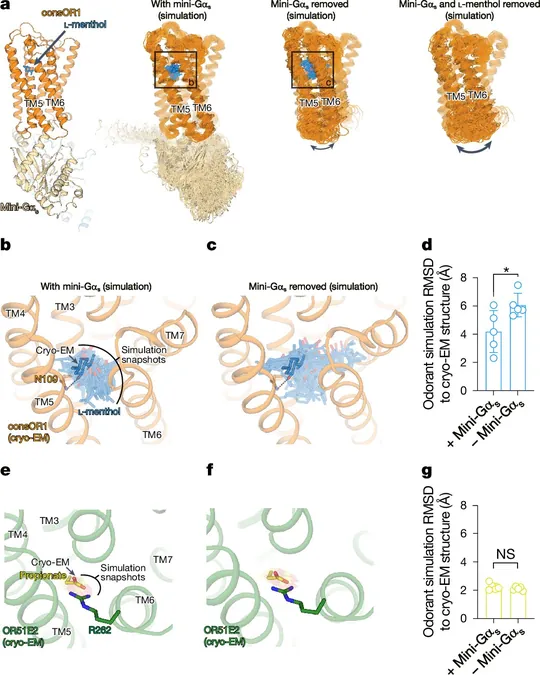
Revolutionary Discoveries in Silicon Transformations Pave the Way for Advanced Material Applications
2024-09-25
Author: John Tan
Introduction
In a groundbreaking study published in *Nature Communications*, researchers led by Valery Levitas at Iowa State University have unraveled the unexpected phase transformations of silicon—a vital material in modern electronics—when subjected to unique strains using a rotational diamond anvil cell. This innovative technique, developed by Levitas when he emigrated from Europe to the U.S. in 1999, allows scientists to apply both pressure and shear directly to materials in real-time, unveiling critical insights into the behavior of materials under extreme conditions.
The Study and Its Findings
Traditionally, research on silicon under high pressure has primarily focused on the effects of pressure alone. However, Levitas and his team ventured into largely unexplored territory by investigating how silicon responds to plastic, or permanent, deformations in addition to high pressure. Their experiments involved silicon samples with particle sizes down to 100 nanometers, and they found striking results: under a mere pressure of 0.3 gigapascals—significantly less than the 16.2 gigapascals commonly required—silicon underwent a transformation from its “Si-I” phase to the more complex “Si-II” phase. The researchers noted this represents a remarkable reduction in necessary pressure by a factor of 54.
Implications for Material Science
This significant breakthrough challenges existing paradigms in material science and opens up exciting prospects for the development of new silicon-based materials. The seven identified silicon phases, each exhibiting distinct crystalline structures, could lead to enhanced electronic, optical, and mechanical properties, making them highly valuable for various industrial applications.
Goals of the Research
Levitas emphasized that the actual goal of their research is not merely to alter the shape or size of silicon samples but to induce changes at the microstructural level. These alterations are what drive the phase transformations and lead to the discovery of new material properties that can be harnessed effectively in real-world scenarios.
Quotes from Valery Levitas
“I’ve been theorizing about these material questions for two decades, and our findings confirm many of our predictions while also challenging us to explore further,” said Levitas. The implications of working with such low-pressure transformations could be transformative for industries that currently find it impractical to utilize high-pressure conditions for material synthesis.
Funding and Future Directions
With funding from prestigious organizations like the U.S. National Science Foundation and the U.S. Army Research Office, this pioneering research positions Iowa State University at the forefront of materials science innovation, promising a future where advanced materials are produced more efficiently and cost-effectively. As the research community continues to explore these novel findings, Levitas and his team are excited about the potential applications that may arise from understanding the complex interplay of pressure, shear, and material transformation.
Conclusion
Stay tuned for more revelations, as the journey of delving into the heart of silicon has only just begun!




 Brasil (PT)
Brasil (PT)
 Canada (EN)
Canada (EN)
 Chile (ES)
Chile (ES)
 España (ES)
España (ES)
 France (FR)
France (FR)
 Hong Kong (EN)
Hong Kong (EN)
 Italia (IT)
Italia (IT)
 日本 (JA)
日本 (JA)
 Magyarország (HU)
Magyarország (HU)
 Norge (NO)
Norge (NO)
 Polska (PL)
Polska (PL)
 Schweiz (DE)
Schweiz (DE)
 Singapore (EN)
Singapore (EN)
 Sverige (SV)
Sverige (SV)
 Suomi (FI)
Suomi (FI)
 Türkiye (TR)
Türkiye (TR)